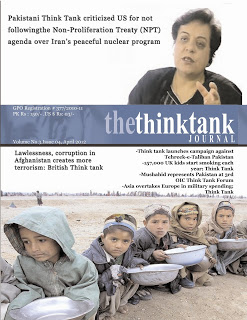In a triumphant return to the global stage, 23 Afghan women refugees are set to make history at the FIFA Unites: Women’s Series in the UAE this October 2025. After nearly four years in exile, this squad—forged through grit, talent, and FIFA’s unprecedented support—will compete in a four-team tournament, marking their first international matches since the 2021 evacuation of Afghanistan’s football community. Beyond the pitch, their journey is a beacon of resilience, defying oppression and redefining what’s possible for women in sport.

Afghan Women’s Refugee Team Takes Flight
The Afghan women’s refugee team, announced on September 28, 2025, is more than a roster—it’s a symbol of hope. Comprising 13 players from Australia, five from the UK, three from Portugal, and two from Italy, this diverse squad blends seasoned veterans with young stars hungry to shine. Selected from 70 candidates across three talent camps in Australia and England, these athletes underwent rigorous evaluations led by former Scotland international Pauline Hamill, now their head coach.
FIFA’s bold initiative, greenlit by its Council in May 2025, is a cornerstone of the three-pillar Strategy for Action for Afghan Women’s Football. Since evacuating over 160 Afghan athletes in 2021—an effort unmatched in global sports—FIFA has poured millions into facilities, coaching, and holistic support to revive the team. The UAE tournament, kicking off late October, pits them against top competition, offering a global stage to showcase their skill and spirit.
“This is a moment of unity and opportunity,” FIFA’s leadership declared, emphasizing football’s power to inspire. For players like defender Kereshma Abasi, it’s personal: “This is my chance to rewrite my story and inspire others.”
How the Team Was Built
The road to the UAE began with three high-intensity talent identification camps. The first, held in Sydney, Australia, scouted players across Oceania, followed by two at England’s elite St. George’s Park, a hub for world-class training. Over 20 professionals—assistant coaches, doctors, nutritionists, and safeguarding experts—supported the process, ensuring a female-centered approach across five continents.
Coach Hamill, a trailblazer in women’s football, led assessments with a focus on skill, resilience, and potential. “These camps gave us a clear picture of the talent pool,” she said. “The squad we’ve built is ready to make history.” The selected 23 represent a mix of experience—like UK-based goalkeeper Elaha Safdari, who plays for Rotherham United—and youthful ambition, with an average age of 24.
FIFA’s support went beyond the pitch. Partnering with the UNHCR, the program provided secure travel, full insurance, medical care, mental health support, and workshops on leadership and female health. Each player received a tailored performance profile, setting a new standard for refugee athlete care. As Safdari put it, “This shows Afghan women can achieve anything.”
Why This Team Matters:
The Afghan women’s refugee team isn’t just playing for goals—it’s kicking down barriers. Since the Taliban’s 2021 takeover, Afghan women have faced severe restrictions on sports and public life. FIFA’s evacuation of 160+ athletes was a lifeline, and this team’s formation is a defiant next step. Their matches in the UAE will be broadcast globally, amplifying their message of resilience to millions.
This isn’t just about Afghanistan. The team’s journey resonates with displaced athletes worldwide, from Syria to Ukraine, proving sports can rebuild lives. Data backs the impact: Programs supporting refugee athletes have boosted mental health by 40% and community integration by 60% in host countries. For fans, it’s a chance to rally behind underdogs whose victories echo far beyond the scoreboard.
Can They Sustain the Momentum?
While the UAE tournament is a milestone, hurdles loom. Legal and logistical complexities—visas, travel bans, and funding—nearly derailed the camps, and more players await inclusion as restrictions ease. On the pitch, the team faces seasoned opponents, with limited match practice due to their diaspora status. Yet, Hamill remains optimistic: “Their hunger and unity are their edge.”
FIFA’s long-term plan includes sustained support packages—scholarships, club placements, and more camps—to keep the pipeline open. By 2026, the goal is a fully integrated team competing in qualifiers, potentially for the 2027 Women’s World Cup. But funding, pegged at €5 million annually, depends on global donors and political will.
What’s Next: A Legacy Beyond the UAE
As the Afghan women’s refugee team laces up for the UAE, their story is already rewriting sports history. Win or lose, their presence challenges stereotypes and inspires a generation. FIFA’s model—merging elite training with humanitarian aid—sets a blueprint for other sports bodies, with the IOC reportedly exploring similar initiatives for 2028.
Women’s Series, streamable worldwide, and amplify their story. For the players, it’s a chance to reclaim their narrative. As Abasi says, “This is about proving anything is possible.” Will this team spark a global movement for women’s sports?



